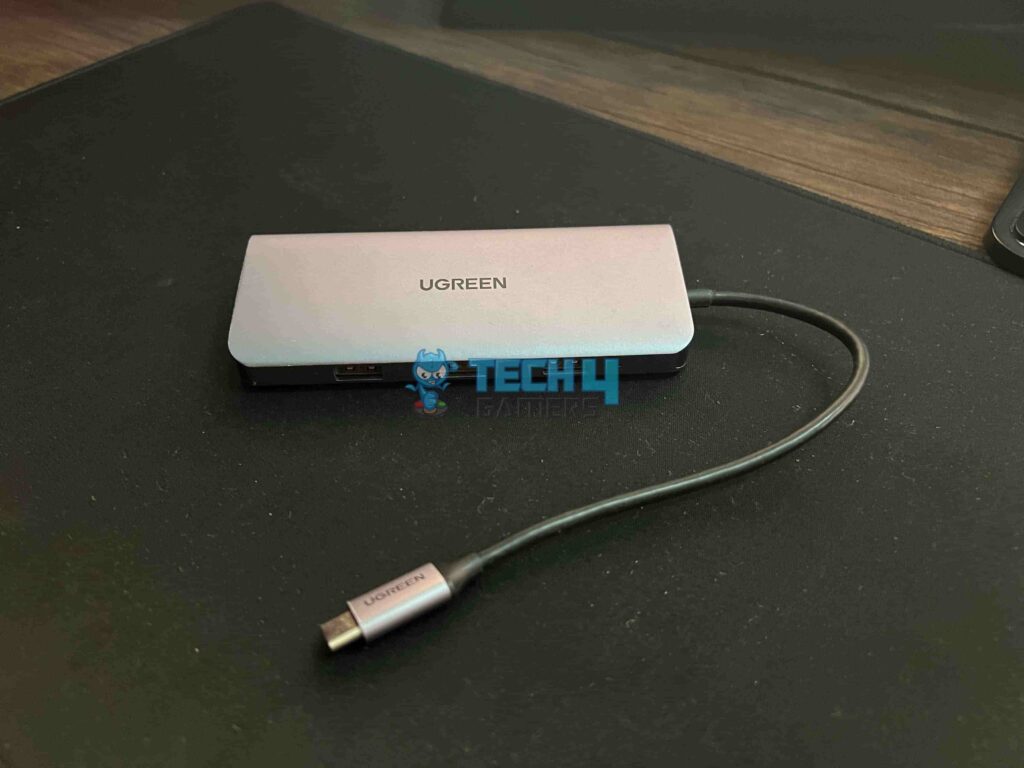Many of the latest PC models, particularly laptops, feature a limited number of USB ports, posing a challenge for users who wish to connect multiple external devices. This limitation hinders users from simultaneously connecting a flash drive, peripherals, or charging devices through a USB port. As someone who has faced this issue, I’ve explored ways to add more USB ports to my PC.
Key Takeaways
- Adding more USB ports to the PC allows you to connect more external devices to the PC.
- An internal USB Card requires an unused PCI/PCIe slot to connect and work.
- USB hubs offer users more flexibility when adding more USB ports. They are either powered or unpowered.
- A dock station offers a variety of port types other than USBs A, C, 2, and 3.
Connect An Internal USB Port Card
An internal USB card is the less messy way to increase the USB ports on your PC. The USB card is inside your computer case and attached to your motherboard. The unused PCI/PCIe port is where you connect the internal USB card.
Here are the steps you need to follow to connect your internal USB card to the motherboard:
- Turn off your PC’s power.
- Unscrew the computer case and open it.
- Check if your motherboard has unused PCI/PCIe slots.
- Insert the USB card into the PCI/PCIe slot carefully. Make sure the connector is placed in the correct direction.
- Tighten the screws of the USB card.
- Make sure to close the computer case.
- Turn on your PC and check if the PC is identifying the USB card.
- If the PC fails to identify the card, you should update your USB drivers from the device manager.
Things To Keep In Mind When Connecting Internal USB Card To a PC
There are a few crucial points to consider before connecting an internal USB card to your motherboard.
- PCI/PCIe Slots: Before connecting the internal USB card, you must ensure unused PCI/PCIe slots are on your motherboard. If your PCI/PCIe slots are already preoccupied with another hardware component, like a graphics card, your USB card will likely go to waste.
- Compatibility with the slots: The expansion slot is available in PCI, PCIe, and mPCIe. Before buying the card, check the type of your expansion slot. The card should be compatible with the expansion slot to make it work.
- How many ports does the card have: You will most likely increase your USB ports by four. The card has limited ports because it can only take a limited amount of power from the PCI/PCIe slots.WARNING: The higher the number of ports, the more likely the data transfer speed will fall.
Connect An External USB Hub
Another great option you can opt for without having to mess with the insides of your PC is to connect a USB hub to your PC, something which I personally use.

- Connect the type B connector to its port in the USB hub if it isn’t already connected.
- Make sure to connect the port to a power outlet. (Skip this step if using an unpowered USB hub)
- Connect the type A USB on the other end to your PC’s type 3 USB port.
- Check if the PC recognizes the device.
- If the PC does not recognize the device, update the USB drivers from the device manager.
Things To Keep In Mind When Connecting a USB Hub To a PC
Here are some crucial points to remember when connecting a USB hub to your PC.
- Quality of the USB hub: Always make sure to check the quality of the USB hub before buying it. The quality is most likely directly proportional to the hub’s price. If you buy a cheap USB hub, it will most likely have a slow data transfer speed, and it will not be able to handle many devices. On the other hand, an expensive USB hub will most likely offer excellent data transfer speeds and can manage the devices you connect to it better.
- Your requirements: Before getting a USB hub, it is essential to keep the devices you will connect to it in mind. If it is just peripherals, you can go for an unpowered hub. However, if the devices are more power-demanding, you should opt for a powered USB hub.
- The data transfer speed: A USB hub supports USB type 3 is a good option. That way, you can transfer your data at higher speeds. Not only that, but the backward compatibility of the USB type 3 will let you connect to a USB type 2 if you have one. Tip: Many of the latest devices come with type C USB, which offers an even higher data transfer speed. You can also opt for a USB hub that supports type C USB.
Connect A Dock Station
Dock stations are an upgraded version of power USB hubs. They support Type A, C, 2, and 3 USBs and have an Ethernet port, VGA port, LAN, and SD card slot. You will need an AC/DC power adaptor to power these stations. Dock stations are great for laptops.
Here are the steps you need to follow to connect your dock station to the PC.
- Insert the connector into its respective port on your PC. (A type C connector should be connected to a type C port).
- Connect the power adaptor to the power outlet.
- Turn your dock station on.
- Check if the PC recognizes the device.
- If the PC does not recognize the device, update the USB drivers from the device manager.
Things To Keep In Mind When Connecting a USB Hub To a PC
Here are some crucial points to remember when connecting a dock station to your PC.
- Number of ports: Always check the number of USB ports on the dock station before buying it. It should have enough ports to connect all your devices simultaneously.
- The type of ports: Keep checking the ports of devices you look forward to connecting to the dock station. Some devices require different kinds of ports for them to work. For instance, to form an internet connection, your dock must have a port for an Ethernet cable.Important: The dock station must have type 3 or type C USB ports to transfer data faster.
- Connector: The connector of the dock station should be compatible with the port on your PC. If your laptop has a single port of type C cable, getting a dock station of the same cable is essential.
Related Articles:
- How To Use Two Controllers On PC? [All Windows + Methods]
- How To Connect Power Button To Motherboard [Step By Step]
- 6 Ways To Fix PS4 USB Ports Not Working
Thank you! Please share your positive feedback. 🔋
How could we improve this post? Please Help us. 😔
[How To’s & Guides Editor]
Haddi has been in the Gaming and tech Space for over 10 Years Now; he has worked on notable websites like eXputer, Gamepur, Gear Siege, Gearnuke, and plenty more. He is an expert at Games & PC Hardware; you can expect him to solve any problem. People often joke, that if there is any problem anyone can solve, Haddi can solve it faster. Currently, Haddi writes and manages a Team of Experts at Tech4Gamers.
Contact: Haddi@tech4gamers.com


![How To Update DLSS, FSR, or XeSS Version [Tried & Tested]](https://tech4gamers.com/wp-content/uploads/2025/02/DLSS-FSR-XeSS.jpg)
![How To Change IP Address? [PC And Smartphone] how to change IP address](https://tech4gamers.com/wp-content/uploads/2023/04/how-to-change-IP-address-218x150.jpg)
![How to Ground Yourself When Building A PC [Quick Steps] How to Ground Yourself When Building A PC](https://tech4gamers.com/wp-content/uploads/2022/09/How-to-Ground-Yourself-When-Building-A-PC-218x150.jpg)
![How To Check The Power Supply Of Your PC [With Pictures]](https://tech4gamers.com/wp-content/uploads/2024/02/How-to-Check-PSU-218x150.jpg)
